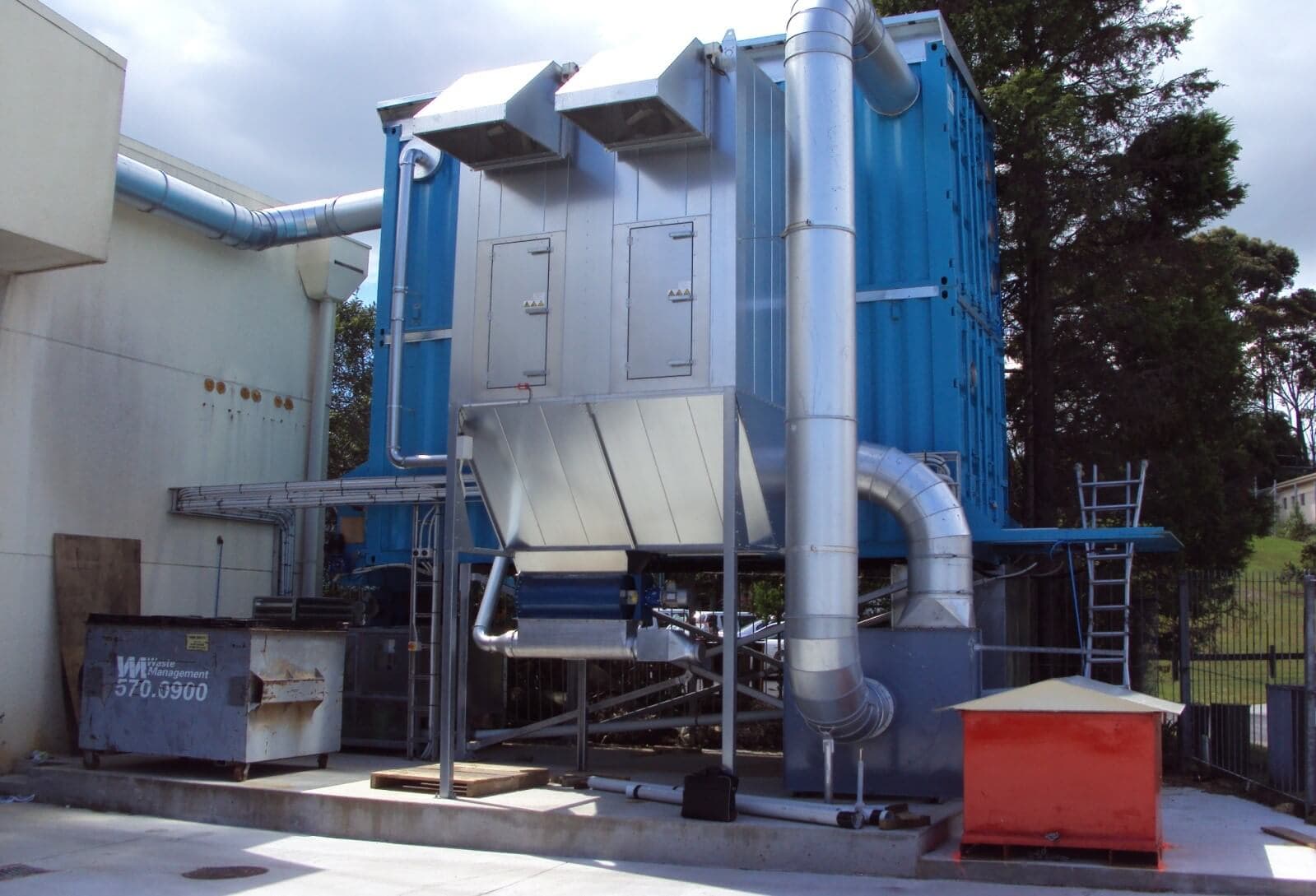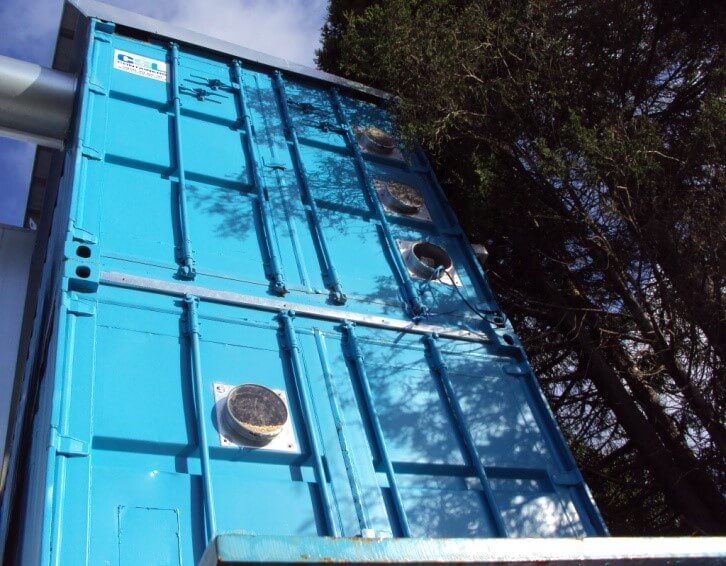



Project Detail
The level of high speed moulding conducted by B&V necessitates a highly effective dust extraction system to ensure a safe working environment and avoid product imperfections.
To achieve this, Bungalow & Villa commissioned Airtight Solutions to redesign an effective, reliable and fully automated dust extraction and materials handling solution.
The Solution
This solution involved the design, engineering and manufacturing of a fully automated collection, filtering and briquetting system which would remove wood waste and convert it into compacted briquettes, thereby reducing the waste volume by 90%.
The Extraction System – AIRTIGHT NFS2HJ 45kW
This system operates using a main extraction fan which ensures airflow reaches the woodworking machine usage points. These pickup points can be isolated with slide dampers, which allows for consistent airflow as required, maintainability and reduces power consumption.
Airtight Solutions designed this ducted system using Quick Fit ducting, with the main 45kW 4 pole extraction fan having its variable speed drive set to 1450rpm. This fan draws the shavings into the silo so it can be disposed in the heavy/large waste collection while the light waste is carried into the fan and 2HJ filter. The waste is then discharged through a rotary valve into the waste bin (note: the waste bin has been removed in this instance, replaced instead by a separate vacuum line which connects back to the silo. This means there is no need to empty the bin).
Maintenance is almost effortless with this specially-designed system, as the filter bags are automatically cleaned by the reverse air regeneration fans that are set to run periodically. The cleaning interval is customisable thanks to the selector switch in the filter control panel. When the stop button is pressed, the cleaning cycle is initiated so that the filter bags are clean when the system is restarted.
Dust from 2HJ Filter
The dust in the rotary valve is discharged into the empty pipe, with this being extracted through a duct to the silo using the force of the main extraction fan. Consequently, there is no need to have a waste bin under the rotary valve, which saves you maintenance and clean-up time.
Dust emissions during the filter regeneration fan clean down are prevented thanks to the back-pressure flap which has been fitted to the inlet of the empty pipe. The flow of air and dust is regulated by a removable cone and insert in the empty pipe, which prevents the chance of blockages.
Silo Description
Airtight Solutions also designed the system to have a silo shaving storage and feed system. A hydraulic power pack assists in pushing the shavings out into an auger that feeds them into a rotary valve. From here, the shavings are fed into the hopper of the Airtight AP775 Briquetting Press.
Correct operation is ensured by the cylinders’ proximity switches, with alerts being given to the operator if certain filling levels are reached. Sight glasses were also installed into the silo to allow for visual assessment of dust levels.
Briquetter Description
Airtight Solutions included an Ap775 Briquetting Press system as part of this solution, which compacts the shavings by 90%, thereby saving space. The shavings are fed into the briquetter hopper, with the agitator and outfeed screw in the briquette press chamber working thanks to the hydraulic power pack. The waste is reduced to briquettes which are approximately 70mm in diameter and 70mm long at a rate of 1 per 7 seconds or 120kg per hour.
Integrated System Automation
To ensure the hopper is not overfilled, there is a high-level switch that allows the operator to turn off the silo feed as needed. There is also a low-level switch, which ensures the briquetter is off when the hopper is close to empty.